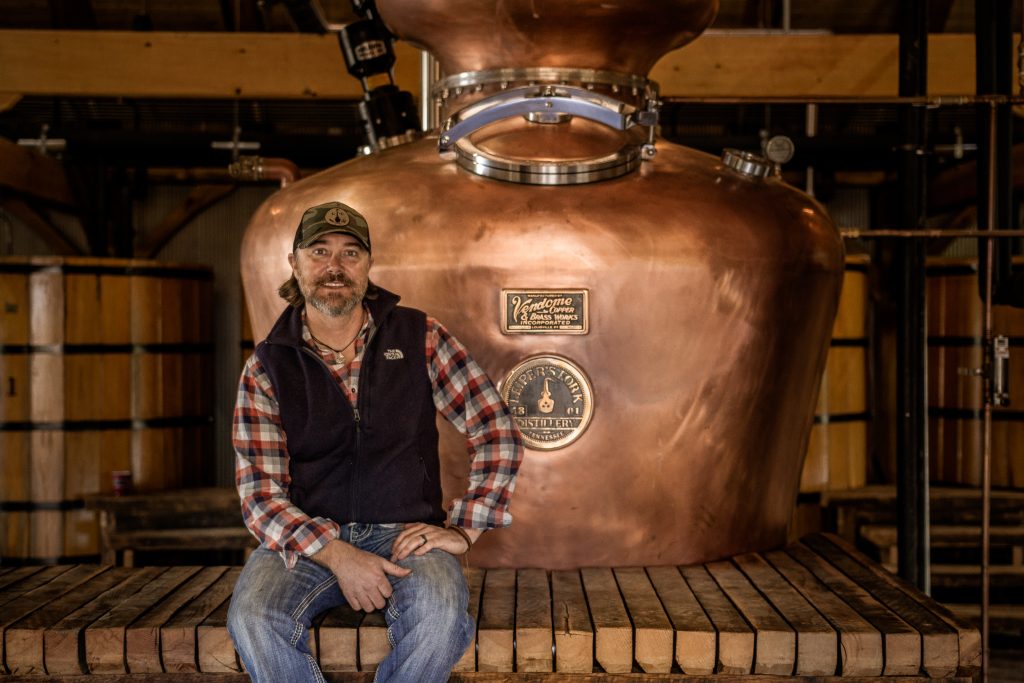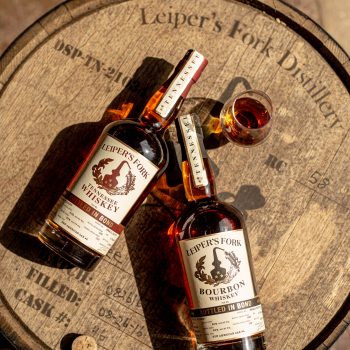Leiper’s Fork on being bottled-in-bond and its ‘Kings of Leon’ approach to the UK
By Arabella MilehamArtisan Tennessee whiskey brand Leiper’s Fork Distillery, the first such American spirit to join Pol Roger Portfolio, is releasing its first whiskeys in the UK this month. Arabella Mileham caught up with founder Lee Kennedy to find out more.

Over the past few years, there’s been a renaissance in American whiskey, with a growing number of small boutique and artisanal distilleries emerging, sparked by a thirst for unique products. Enter Leiper’s Fork, a small-batch distiller in Williamson County Tennessee, which proudly refuses to cut corners in its pursuit of quality and flavour.
The distillery joined Pol Roger Portfolio last autumn – the only American distillery in the distinguished line-up – and July sees the release of its bottled-in-bond Tennessee whiskey and Bourbon whiskey onto the UK market.
As founder-owner and chief distiller Lee Kennedy points out, despite Tennessee being considered as one of the original four traditional whiskey-making regions of the world – along with Scotland, Ireland, and Kentucky – the state retained a form of Prohibition long after the ban’s repeal in 1933, only allowing distillation in three of its 95 counties (Lincoln, Moore, and Coffee) until a law change in 2009.
Kennedy, a self-confessed barn distiller, who has spent years mastering the chemistry of distilling Bourbon and Tennessee whiskey grain, was determined to set up a distillery soon after the change came into effect. The whiskeys produced at Leiper’s Fork are 100% mashed, fermented, distilled, aged, and bottled in-house, and the distillery is proud to label them as bottled -in-bond.
 The Bottled-in-Bond Act of 1897 was the United States’ first consumer-protection act, but still has relevancy, particularly for new distillers, as a statement of provenance, Kennedy says. “Back in the day, rectifiers were buying whiskey from distillers and adding things like shoe polish and turpentine, and trying to mimic maturity,” he explains. “Distillers went to Congress in 1897, and got this law passed. It stipulates that the whiskey has to be made by one single distiller in one distilling season (January-June or July-December), and aged in a government bonded warehouse for at least four years, and bottled at 100 proof or 50% ABV.”
The Bottled-in-Bond Act of 1897 was the United States’ first consumer-protection act, but still has relevancy, particularly for new distillers, as a statement of provenance, Kennedy says. “Back in the day, rectifiers were buying whiskey from distillers and adding things like shoe polish and turpentine, and trying to mimic maturity,” he explains. “Distillers went to Congress in 1897, and got this law passed. It stipulates that the whiskey has to be made by one single distiller in one distilling season (January-June or July-December), and aged in a government bonded warehouse for at least four years, and bottled at 100 proof or 50% ABV.”
“Letting our consumers know that we made the whiskey from start to finish is a big part of our story,” he says. “And the Bottled-in-Bond Act still stipulates that all these things still apply.”
But being bottled-in-bond is only half of Leiper’s Fork’s story. Determined to put his own stamp on the whiskeys, Kennedy adopted the distilling techniques of Tennessee’s pre-Prohibition heyday, when there were around 322 licensed distilleries in the state, to make Leiper’s Fork’s rich and flavourful style.
Nowadays, the majority of mass-produced American whiskeys use some form of column still or hybrid still, but Kennedy invested in a bespoke Scottish swan neck pot still, with a line arm into a four plate ‘purifier’, also known as a ‘reflux condenser’, an attachment that sit at the top of a still to provide additional reflux capacity. This, he explains, gives the whiskey a more robust flavour profile than a column still.
Leiper’s Fork also uses a sweet mash process, something practised widely in the 19th century before sour mash became the default process. Although he admits it is “a harder process to perfect”, the benefits are twofold. The gentler style of mash cooking – the water doesn’t need to be at boiling point before the corn is added – creates a higher pH through the process, “which translates into a little bit of a softer whiskey”, Kennedy says.

Having a lower exit proof coming off the still than that stipulated by federal law – around 137 US proof compared with the mandated maximum of 160 (or 80% ABV) – gives an extra level of flavour, he notes. But this isn’t just about a slavish adherence to old practices – a scientific study on cask maturation at different proof points by Seagram found 110 US proof (or 50% ABV) was the optimum level for whisky to get the best flavour from the charred-wood casks, significantly lower than the regulated maximum of 125 US proof (62.5% ABV).
“They found that at 110 proof or 50% you were getting the most efficient use of the cask,” Kennedy says. “It proves itself to be the perfect mixture of alcohol and water for the extraction of vanillas, caramels, and marzipan notes.” Barley proportions The proportion of barley used is also higher at Leiper’s Fork than at many of its competitors, with around 15% of barley malts going into every batch.
“Traditionally, Bourbons and Tennessee whiskeys have had 5%-10% barley malt in them, mainly for their enzymatic power, but there’s a lot of flavour in that malt,” he says. “We treat our barley, which is toasted, as a flavouring grain, for those Sassafras and cola notes.”
What will UK consumers make of this unique pre-Tennessee style? According to Tim Webster, business-development and brand manager at Pol Roger Portfolio, demand for American whiskey “has gone through the roof” in the UK, particularly in London.
“There are so many interesting things going on in America, and people are keen to learn about the story and the processes that differentiate whiskeys from each other,” he says. “When they’re spending good money on good whiskey, they want to be able to say why it tastes different.”
At £84 per bottle, Leiper’s Fork comes at a premium price point, but as Kennedy points out, “we touch everything from grain to glass, we grow 75% of our own corn, and source other grains within a 10-mile radius to the distillery. “We don’t bring anything in from any other distillery, which is unique in American whiskeys.”

Ensuring that it is in the “right places”, where it can be accessible to people who really care about the product will be key – and so will tasting, as the team recognises that there will still be a degree of education required to demonstrate the differences between a single malt, which the UK consumer is very familiar with, and a Bourbon or Tennessee whiskey.
“People walk in and are intrigued by the product, and want to taste it, and we are finding that almost always, that urge leads to a sale, which is good,” he says. The partnership with Pol Roger Portfolio will be key to building the brand, he says – and part of the “Kings of Leon approach” to building credibility for its style – starting off in the UK before spreading globally.
“It’s a backwards way of doing things, but when I walk into a bottle shop in Manhattan, five years from now, I can say well, this is what we’re doing in London,” he explains. “We’re not trying to blanket the UK or conquer the world, but we do want to develop our brand credibility in the UK, the home of whisky.”
Related news
De Bortoli reveals new take on Rutherglen Muscat
Bodegas Sonsierra unveils two new single vineyard wines
How to make top blanc de blancs in 'the kingdom of Pinot Noir'
